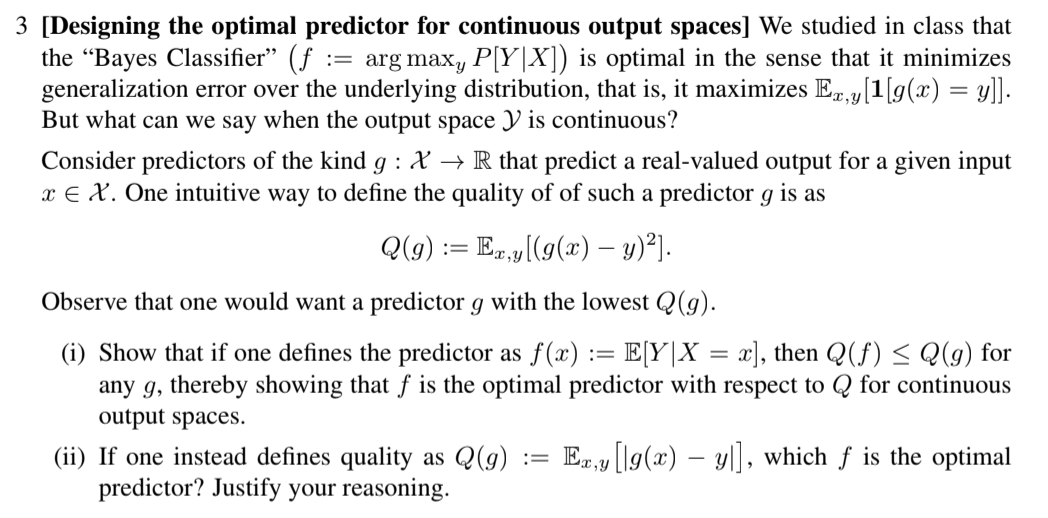Question
[Designing the optimal predictor for continuous output spaces] We studied in class that the Bayes Classifier f := arg maxy P[Y |X] is optimal in
[Designing the optimal predictor for continuous output spaces] We studied in class that the "Bayes Classifier" f := arg maxy P[Y |X] is optimal in the sense that it minimizes generalization error over the underlying distribution, that is, it maximizes Ex,y[1[g(x) = y]]. But what can we say when the output space Y is continuous? Consider predictors of the kind g : X ? R that predict a real-valued output for a given input x ? X . One intuitive way to define the quality of of such a predictor g is as
Q(g) := Ex,y[(g(x) ? y)^2].
Observe that one would want a predictor g with the lowest Q(g).
(i) Show that if one defines the predictor as f(x) := E[Y |X = x], then Q(f) ? Q(g) for any g, thereby showing that f is the optimal predictor with respect to Q for continuous output spaces.
(ii) If one instead defines quality as Q(g) := Ex,y|g(x) ? y|, which f is the optimal predictor? Justify your reasoning.

Step by Step Solution
There are 3 Steps involved in it
Step: 1

Get Instant Access to Expert-Tailored Solutions
See step-by-step solutions with expert insights and AI powered tools for academic success
Step: 2

Step: 3

Ace Your Homework with AI
Get the answers you need in no time with our AI-driven, step-by-step assistance
Get Started


